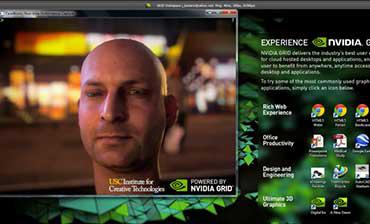Nvidia GRID: 3-D Rendering In The Cloud

|
|---|
A free service unveiled this week addresses performance concerns about virtual desktop infrastructure. Nvidia Thursday unveiled GRID Test Drive, which facilitates the testing of graphics-intensive applications such as AutoCAD executed in the cloud and rendered on a local Windows machine. The technology leverages GRID, the company's server-side GPUs and works with preloaded apps or a company's own.
"Rather than spending thousands of dollars without knowing what the benefits are or if it will work, GRID Test Drive gives you instant access to a virtual desktop and your own applications for testing," said Milan Diebel, Nvidia's senior product manager for GRID. "And running your VM in the cloud also gives the benefits of faster uploads and downloads and quicker installs of apps like, say, Photoshop."
The GRID solution extends the virtual desktop infrastructure where it has never gone before -- to graphics-heavy applications -- where the CPU-based graphics processors were unable to perform well enough for an adequate user experience. The Kepler-based GRID cards are installed in a PCIe x16 server slot where they share two or four GPUs between as many as 32 VDI clients.
The system works by modifying the host-system's hypervisor for Nvidia's "pass-through technology." This permits standard Nvidia graphics drivers in a Windows virtual instance to communicate with the hardware GPUs installed in the host server. "A desktop remoting agent in the VM gives us a way to capture pixels rendered in the GPU and send them to the receiver on Windows," Diebel said. Versions for Linux and Mac OS X are expected in about two months, he added.
GRID boards were unveiled last year and have been embraced by Dell, Hewlett-Packard and IBM. They're certified to run with hypervisors from Citrix, Microsoft and VMware.
Nvidia GRID boards are available now in two models: the GRID K1 board has four GPUs, 16 GB of DDR3 memory, 768 CUDA cores, lists for $2,500, and supports up to 16 entry-level users. The higher-end GRID K2 board has two GPUs, 3,072 CUDA cores, 8 GB of GDDR3 memory, lists for $4,500 and supports as many as 32 users with extreme graphics processing requirements.
PUBLISHED MAY 23, 2014